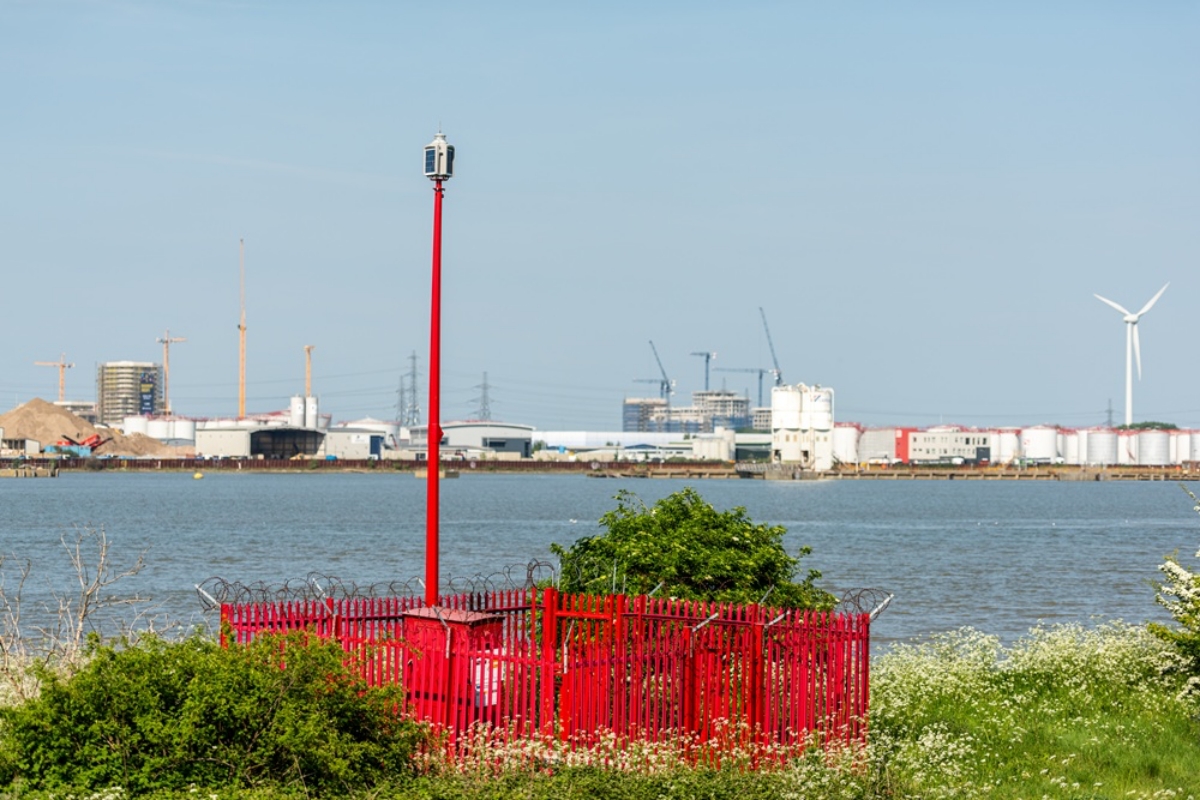CU Phosco, a UK designer and manufacturer of exterior lighting equipment, has replaced three structurally compromised historic lighthouses at Crossness, Coldharbour, and Margaretness along the River Thames. Commissioned by the Port of London Authority, the project involved designing, manufacturing, and installing modern, 8m mid-hinge columns fitted with solar-powered beacons – eliminating the need for working at height while preserving the visual identity of the vital navigational aids.
The Port of London Authority (PLA) is responsible for maintaining safe navigation on one of the UK’s busiest inland waterways. As part of its ongoing infrastructure programme, structural inspections revealed that three existing lattice tower lighthouses — those at Crossness, Coldharbour, and Margaretness — had reached the end of their serviceable life.
These historically significant structures, initially installed by Trinity House in the early 20th century, were in a deteriorating condition. To ensure continued safe navigation along this stretch of the Thames, CU Phosco was appointed via competitive tender to design and install replacement solutions that would meet heritage sensitivities and modern safety standards.
CU Phosco proposed and delivered three 8m lightweight mid-hinge columns, each supporting a free-issue solar-powered beacon. The red-painted columns retain the original structures’ traditional appearance and focal height, ensuring continuity for mariners and minimal visual disruption.
Each column is equipped with a mid-hinge mechanism, allowing the beacon to be lowered for maintenance without the need to work at height – improving operational safety and reducing ongoing maintenance risks.
Access to each location was particularly challenging, with the sites positioned along narrow towpaths. CU Phosco used specialist-tracked cranes and MEWPs to ensure a safe and efficient installation, as well as carefully dismantling and removing the original towers in sections.
By safely decommissioning the ageing lattice towers, CU Phosco has removed a potential structural risk and replaced it with a durable, modern alternative that aligns with the Port of London Authority’s long-term infrastructure goals.
Mark Collier, Civil Engineer, Port of London Authority, comments, “[It] was a pleasure working with the whole CU Phosco team to help PLA safely deliver the replacement of three lighthouses with new lowering masts. These new masts eliminate any need for PLA operatives to work at height on the lighthouses.
“CU Phosco successfully managed the project’s difficult logistical challenge of accessing the remote sites on towpaths right beside the Thames. We are very happy with the overall delivery from start to finish.”
For more from CU Phosco, click here.



